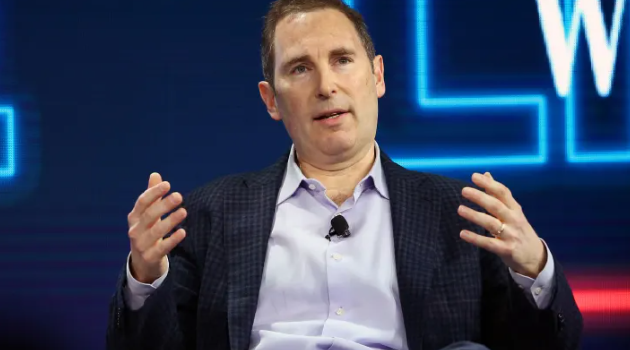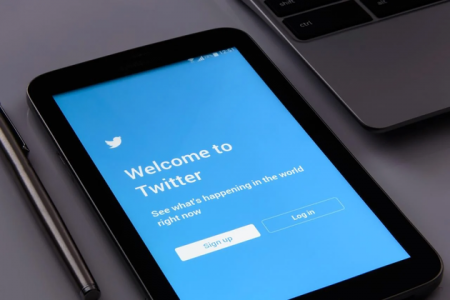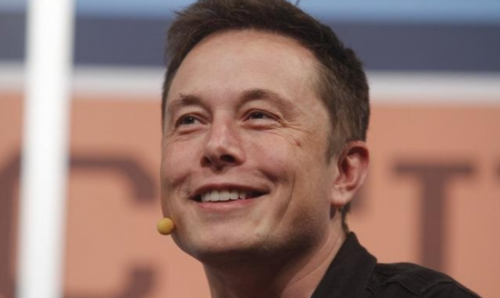your current location is:Home > Finance > depthHomedepth
Adjusting business, suspending warehouse construction, and freezing recruitment, Amazon has set off a wave of "cost reduction and efficiency improvement"

In its first 25 years as a public company, Amazon has maintained a unique principle: Growth is more important than profitability. And that's to the chagrin of Wall Street investors.
Amazon founder Jeff Bezos laid out the strategy in his first investor letter in 1997. "We will continue to base our investment decisions on building long-term market leadership rather than short-term profitability or Wall Street's short-term reaction," he wrote at the time.
However, with three quarters in the past in 2022, the tone has clearly changed. In July 2021, Andy Jassy succeeds Bezos as Amazon's CEO. He has been trying to cut costs to reduce cash burn as Amazon faces slowing sales and a global economic downturn. Shares of Amazon have fallen 33% this year, more than 25% of the S&P 500, and are likely to have their worst year since 2008.
Such cost-cutting measures are unusual for Amazon's investors and employees. Amazon’s workforce grew from less than 650,000 people in 2018 to 1.6 million last year. In recent months, however, Amazon has shut down its telehealth business, discontinued a video-calling projector product for children, reduced the number of U.S. call centers to just one, reduced delivery robots, and closed underperforming brick-and-mortar stores. , and to close, cancel or delay construction of some new warehouses. Amazon is also reportedly considering significantly shrinking its secretive lab division, Grand Challenge.
In terms of recruitment, Amazon has frozen formal job recruitment in the retail business. Last month, Amazon held its annual hardware launch event. Typically, Amazon showcases a slew of digital gadgets and robots that could be coming out in the next year or two at the event. However, this year's event has shrunk significantly compared to previous launch events.
DA Davidson analyst Tom Forte currently has a "buy" rating on Amazon stock. But he also said: "If we look at these moves together, Amazon seems to care more about profit margins than ever."
Recently, Jassy spoke at Amazon's worldwide all-hands meeting about recent efforts to control costs. He said at the conference: "Good companies that are sustainable for the long term and think long-term will always have that push and pull. Sometimes they will expand massively; sometimes they will look back and try to be profitable. Tighten your belt. There are also times when you run multiple businesses like Amazon, and some businesses expand and some businesses naturally get re-evaluated.”
Amazon isn't alone in feeling the pinch. Two other tech giants, Facebook parent Meta and Google parent Alphabet, have also been cutting costs recently in response to a challenging macro environment and slowing growth after a decade of rapid growth. Companies in the U.S. tech industry are announcing layoffs and hiring freezes, or lowering hiring targets for the coming months.
That's not to say Amazon's investment spending on all fronts is hitting the brakes. Amazon has also been on a buying spree in the past few months, including buying primary healthcare provider One Medical for $3.9 billion, iRobot, maker of Roomba sweeping robots, for $1.7 billion, and Cloostermans, a Belgian warehouse robotics company, for an undisclosed sum. ). Amazon also said it would spend about $1 billion next year on pay raises and benefits for frontline workers and plans to hire 150,000 workers to cope with the holiday season’s peak sales.
"We've had a lot of investment, and it's going to continue," Jassy said at the conference, citing areas where Amazon will continue to invest, including its Alexa voice assistant, its Prime Video video service and grocery stores. "Our trick during this time is to strike a balance between what we think is a long-term investment in the future of the company and the customer experience, and really focus on delivery in the process."
The recent trend of cost-cutting also poses a longer-term problem, as it coincides with Amazon's first top management shakeup since Bezos' departure. The changes under Jassy have led some analysts and former employees to wonder whether Amazon is making a permanent strategic shift or taking temporary steps to deal with economic uncertainty.
Bezos is seen as a fearless entrepreneur, willing to make high-risk bets and invest huge sums of money that may not lead to meaningful income for years to come. Bezos' biggest successful bet is Amazon's cloud computing service AWS. Amazon founded AWS in 2006, and Jassy was the head of AWS until he was promoted to group CEO last year.
Other recent Bezos projects include self-driving taxis, cashierless stores, and delivery drones. All of these items are designed to make shopping more convenient for customers.
Bezos ended up killing off a lot of products that didn't pan out after launch, one of the most famous examples being the Fire Phone. It was Amazon's first smartphone, but it stopped selling in 2015, a year after it went on sale. Other such attempts include restaurant delivery services, social media feeds, gadgets that allow one-click shopping, ticketing services, auction sites, and online wine shops.
Craig Berman, a former vice president of global corporate communications at Amazon, said: “Amazon has absolutely no fear of killing underperforming businesses. It’s never been a problem for them in the past.”
As head of AWS, Jassy was at the heart of Amazon's profit engine, feeding the ammunition for Amazon's investments elsewhere. Yet since taking over as group CEO, Jassy has had to contend with the worst inflation in the U.S. in 40 years, a shortage of goods and an aggressive union movement. Amazon has long held an anti-union stance.
Further contractions in the future
Currently, Wall Street is increasingly disliked by the exploratory high-risk investments common in the Bezos era. In July, Amazon reported its third straight quarter of single-digit revenue growth, largely due to weak demand in its core e-commerce business.
Jassy is also trying to rein in Amazon's expansion amid the pandemic, which prompted Amazon to build more warehouses and hire more workers. Amazon's workforce nearly doubled during the pandemic, but it reduced its workforce by 99,000 to 1.52 million by the end of the second quarter of this year.
Amazon is likely to do more business contractions next. Currently, Amazon is conducting annual planning, which consists of two phases. The first stage is to develop an "Operational Plan". Former Amazon employees Colin Bryar and Bill Carr describe the annual planning process in their new 2021 book, The Reverse Working Method: Insights, Stories, and Secrets from Inside Amazon.
The first phase usually begins in the summer and requires months of preparation and planning. Each team develops a plan outlining major plans for the year ahead, including applying for a new budget and hiring staff. Documents for this phase, usually submitted before the start of the fourth quarter, cover the critical holiday shopping season, and are reviewed by Amazon's senior management, known as the "S team."
The second phase will begin in January of the following year. The team will then finalize the annual plan. Compared with the first-phase plan, the final version of the plan may be adjusted based on the performance of the fourth quarter.
As the risk of a recession grows, Amazon may consider further cuts if holiday sales are weaker than expected, a former Amazon manager said. Another former manager said Jassy may be more cautious in budget approvals given the uncertainty he's facing, and be more explicit about what areas Amazon should focus on.
In response, an Amazon spokesperson said in a statement that the company continuously evaluates "the progress and potential of products and services to provide value to customers, and regularly makes adjustments based on those evaluations."
Insider: Layoffs unlikely
Insiders believe that Amazon is unlikely to make large-scale layoffs.
When Amazon shuts down a business, it usually offers employees the opportunity to apply for other positions within the company, several former employees said. Affected employees typically spend one to three months looking for other positions internally and have the opportunity to meet different business leaders.
"Amazon doesn't let good people leave the company," said Andrea Leigh, a former Amazon executive who has worked in various Amazon business units for nearly 10 years.
Some people may indeed lose their jobs, though. After announcing the gradual closure of Amazon Care, its telehealth business, Amazon said 159 employees would be cut. An additional 236 employees will leave Care Medical. It's an independent company that was previously involved in treating Amazon Care patients as an outsourcer to Amazon.
Jassy may be counting on a new initiative to drive revenue growth, the second big membership sale in a year. For the first time since its Prime Day sale in 2015, Amazon will be hosting its second sale of the year on Tuesday and Wednesday for the first time.
The big sale could give Amazon an early look at 2023 ahead of its third-quarter earnings report later this month.
Previous:In the matter of layoffs, there are so many "eyes" in Silicon Valley factories
Next:Can the Japanese semiconductor industry be revived with the introduction of TSMC?
related articles
Article Comments (0)
- This article has not received comments yet, hurry up and grab the first frame~













